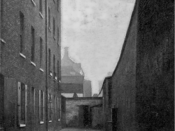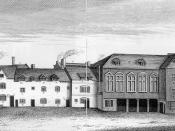I disagree with this view to some extent, as I believe that both the plot and symbol and image rely on each other to create the story that Dickens wants to convey. Dickens' plot is deliberate and therefore entirely necessary to portray the ideals within Little Dorrit, for example the change in luck for characters such as Arthur Clennam and the Dorrit's themselves. These contrasts between wealth and poverty rely just as much on the plot, in order to provide a realistic backbone to the imagery and symbolism which in turn enables the reader to empathise with the themes and make the characters genuine. The plot is used in Little Dorrit to bring out the best and worst in the characters. Amy remains dignified throughout, even when in poverty and the demands of an unappreciative yet dependant family are made her responsibility with no disagreement on her part.
When the family come into wealth, Little Dorrit doesn't lose her selfless nature though the rest of her family impose their money on many occasions.
Dickens doesn't write in allegories, so it is important not to try to find a sub meaning for every occurrence and much of the novel is to be taken literally. There are, however, uses of imagery and symbolism which are very important to the book. The idea of 'Prisons' within Little Dorrit is a good example of how he shows the effects of internalising negative emotions. There are parallels between physical prisons such as the Marshalsea and the less tangible (though no less present) prisons of the characters minds. Even when out of the prison, both William Dorrit and his son tip withhold the same prison mentality, "Wherever he went, this foredoomed Tip appeared to take the prison walls with him. . .until the real...


